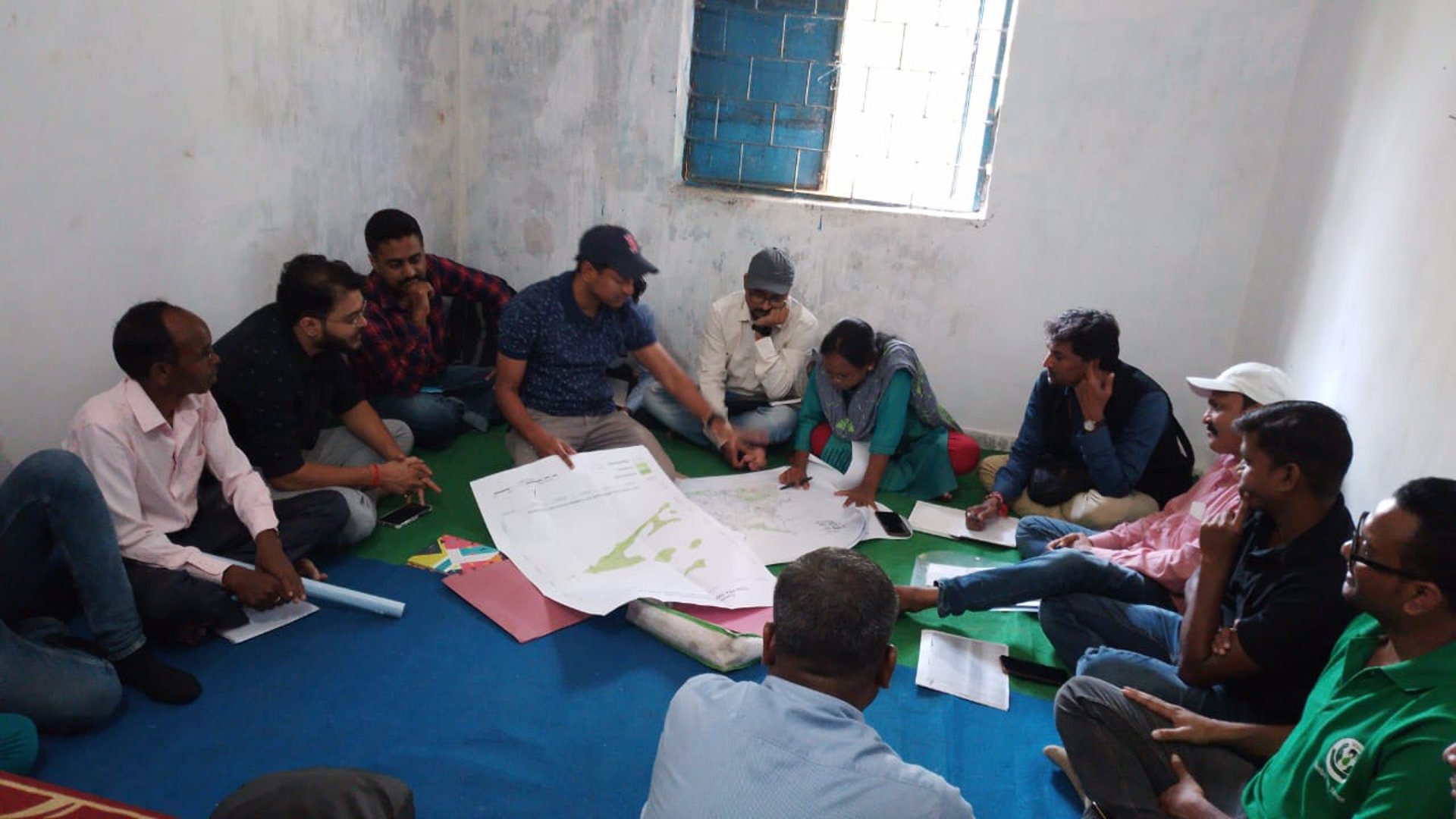
10.11.24
Transforming Recognition of Community Forest Resource Rights through Technology in Jharkhand
On 18–19 October 2023, the State FRA Cell conducted an extensive field test of RatiFi integrated into JharFRA in Simdega district, evaluating its usability at three governance levels—Forest Rights Committees (FRCs), Sub-Divisional Level Committees (SDLCs), and District Level Committees (DLCs). The objective was to ensure the digital claim-filing system is efficient, accessible, and responsive to local challenges.


In Jharkhand's forested landscapes, securing Community Forest Resource Rights (CFRR) and Individual Forest Rights (IFR) under the Scheduled Tribes and Other Traditional Forest Dwellers (Recognition of Forest Rights) Act, 2006—commonly referred to as the Forest Rights Act (FRA)—has long been hampered by complex documentation procedures, slow bureaucratic approvals, and accessibility barriers for forest-dependent communities. Under the Abua Bir Abua Dishom (ABAD) Abhiyan—meaning ‘Our Forest, Our Country’—the Government of Jharkhand has been working to streamline the claim-filing process and scale up CFRR recognition. A key technological intervention in this initiative is JharFRA, a state-customised digital platform for FRA implementation that now integrates RatiFi—a cutting-edge claim-filing application (app) developed by the Initiative on the Forest Economy (IoFE) at the Indian School of Business (ISB).
Testing RatiFi-JharFRA in the Field
The pilot test began in Buruergi village, Bano block, where our team worked closely with local FRC members to evaluate the boundary-mapping feature for CFRR land claims. Using Global Positioning System (GPS)-enabled tools, the app allowed villagers to digitally mark land parcels, reducing reliance on paper-based maps. For CFRR claims, the team registered the FRC chairperson’s details, uploaded completed forms, and demonstrated how the SDLCs and DLCs could access, review, and track claims in real time via the app.
Beyond village-level testing, government officials at block and district levels—including the Circle Officer (CO), Block Development Officer (BDO), District Welfare Officer (DWO), and Divisional Forest Officer (DFO)—were trained in using JharFRA's dashboard integrated with RatiFi. By linking local governance structures directly to claim-processing workflows, this digital transformation aims to reduce delays, enhance transparency, and ensure accountability at every step of the claim-approval process.
The testing process identified several key challenges that must be addressed to optimise RatiFi’s integration into JharFRA:
Network connectivity issues: Initial FRC registration requires stable internet, which is often unavailable in remote villages.
Usability improvements: Some redundant screens in the app need to be removed for smoother navigation.
Mapping and documentation enhancements: IFR boundary mapping requires a GPS visualisation feature, and CFRR claim forms require the ability to upload multiple supporting photos.
Expanded user roles: Block-level officials, such as COs and Rangers, require customised access for more effective claim approvals.
App performance and stability: Users reported frequent app crashes and slow response times, which need to be optimised.
Mobile access to claim documents: Filled claim forms need to be accessible on mobile devices, reducing dependency on laptops for field verification.
These insights reflect the ground-level realities of RatiFi–JharFRA’s adoption in governance. While technology offers significant advantages, its success depends on how intuitive, stable, and adaptable the platform is for both communities and government officials.
RatiFi's Evolution: From Testing to Implementation
Originally designed as an independent claim-filing tool, RatiFi has now been fully customised for JharFRA—the Government of Jharkhand’s official digital platform for FRA implementation—aligning with the ABAD Abhiyan's mission to accelerate CFRR recognition across Jharkhand by simplifying claim processing, tracking approvals, and providing real-time feedback.
The next phase of deployment will focus on:
Enhancing offline functionality: Enable FRCs to file claims in low-connectivity areas, synchronising data once they are online.
Improving user experience: Streamline navigation, reduce loading times, and ensure smoother interactions for both community users and officials.
Scaling digital training: Expand digital literacy programmes for Bir Bandhus, government officials, and community leaders to maximise JharFRA’s impact.
Strengthening post-claim support: Integrate helpline support and helpdesks into the JharFRA ecosystem to assist FRCs through every stage of the claim-approval process.
Addressing Challenges Through Technology
A Transformational Step in Forest Rights Recognition
Jharkhand is leading the way in digital governance for CFRR recognition. By leveraging technology to simplify claims, enhance accountability, and empower forest-dependent communities, the state is setting a replicable model that can be followed across India.
For forest-dependent communities, securing legal rights over their land is not just about ownership—it is about economic stability, sustainable livelihoods, and long-term resilience. With RatiFi–JharFRA's technology-driven approach, the dream of secure tenure and community-led forest governance is closer to reality than ever before.
